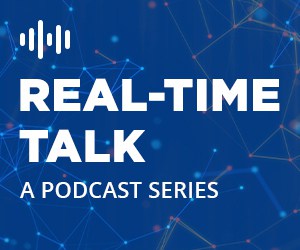
DataOps teams who want to contribute to their enterprise’s data monetization and other objectives can hit the ground running by looking for new ways to monitor data stream quality and asking for automation capabilities that enable ongoing data transformation.
Data teams understand that the future of DataOps is in the cloud. For the past several years, the drive to move information to cloud data warehouses has grown steadily, motivated not only by the imperative to remove friction from data exchanges but also to keep data more secure and as a core component of data operations’ modernization efforts.
As analytical workloads move from on-premises stacks to cloud data warehouses, enterprise data teams are looking for ways to navigate the change and get business workloads and data exchanges ready for migration. And while DataOps professionals are clear on the role of internal data in existing cloud data warehouses, many remain uncertain about how to integrate, transform and observe third-party data sources to enrich other workloads for greater profitability.
For example, will applications, machine learning, customer-facing analytics, and enterprise-wide business intelligence workloads that are currently on-premises also move to cloud data warehouses? There’s no one-size-fits-all response – data migration to the cloud may depend on the industry and individual organizations’ objectives, and the timing will vary considerably across enterprises.
Here’s a closer look at how DataOps professionals can get a head start on making organizational data profitable and build value in the increasingly competitive cloud marketplace.
See also: DataOps: How to Turn Data into Actionable Insights
Learn To Prepare External Data Like a Pro
As more enterprises move analytical workloads into cloud data warehouses and build fewer large, on-premises stacks, DataOps professionals will stay busy migrating information into the cloud. Depending on how many workloads and data required to migrate, it could take years to complete the task.
Early-stage challenges will include replicating data and ensuring that virtualized workloads seamlessly integrate within the cloud ecosystem to facilitate improved analytics and business insights. As processes evolve, it’s critical to keep in mind that an influx of external data, which is critical to data monetization, significantly changes the data preparation workflow.
As companies spend more on combining third-party data with data from internal sources to enhance their data fabrics and drive deeper business insights, more DataOps teams will be engaged in preparing data for analysis by integrating and standardizing data formats. DataOps professionals who demonstrate their external data preparation skills not only contribute to the short-term objective of preparing data for migration but also create value for their companies as enterprises advance their long-term goal of monetizing data.
See also: A Good Data Analytics Program Relies on Good DataOps
Find an Integrated Solution to Manage Critical Data Functions
As DataOps teams take on more tasks related to moving incoming datasets to cloud warehouses, they’ll need to find efficient ways to manage data quality, integration, curation, and other important data management functions so they can effectively manage workflows.
There are point solutions on the market that can help DataOps teams manage specific functions, but a point solution approach creates its own set of issues. For example, when individual solutions are used to manage tasks like ensuring data quality, integration, and replication, it creates a toolset comprising disconnected solutions, which must then be connected downstream by analysts and data scientists downstream. An integrated, self-service solution that combines internal data with a multitude of external sources and accelerates analytics is a better approach.
Use Automation to Transform Data
Before enterprises can derive value from their data by offering a reliable, high-quality array of data products to other data scientists and analysts, they’ll need to give DataOps teams automation technologies and tools to streamline data transformation. Similarly, producing a specific data product requires the right resources and solutions.
Enterprises that aim to monetize internal and external data need a way to integrate, transform, and oberserve datasets to fully productize them to help generate alpha and business insights.
Tools that automate data transformation give DataOps professionals time to concentrate on strategic projects that create value instead of mundane tasks like data wrangling. A recent survey conducted by Forrester Research found that 70% of data teams’ time is spent on preparing third-party data versus only 30% analyzing unique business insights.
Building Skills and Adding Value in 2023 and Beyond
In addition to monetizing data through unique business insights, enterprises have plenty of other incentives to continue moving workloads that are currently hosted on-premises to cloud data warehouses, including more flexible scaling, the ability to deploy solutions in closer proximity to customers and business units, and instant access to a wider array of capabilities. But migrating workloads to the cloud can be incredibly complex, especially for highly customized applications and workloads that are essential to the enterprise.
DataOps teams who want to contribute to their enterprise’s data monetization and other objectives can hit the ground running by looking for new ways to monitor data stream quality and asking for automation capabilities that enable ongoing data transformation since data schemas invariably change and can lead to data pipelines breaking. They should also leverage platforms that can help with data observability, so they can identify issues like missing, corrupted, or otherwise erroneous data that could distort outcomes if not addressed.
With the future of DataOps in the cloud, expect the trend of workloads migrating from on-premises systems to cloud data warehouses to continue past 2023. Enterprise leaders understand the value of data, and they are looking for ways to facilitate data exchanges in cloud marketplaces as a way to monetize it. Most enterprises do not yet have the technology and tools in place to automate this process. There is a new generation of solutions that help automate the integration, transformation, and observability of third-party data that offers an order-of-magnitude acceleration of data migration to the cloud.
This presents an opportunity for DataOps professionals to collaborate with application experts, core engineering teams, and others who are working to create products for a cloud data marketplace. The endeavor will require skilled DataOps teams and integrated solutions, and DataOps professionals who build skills and add value will be ready.




























